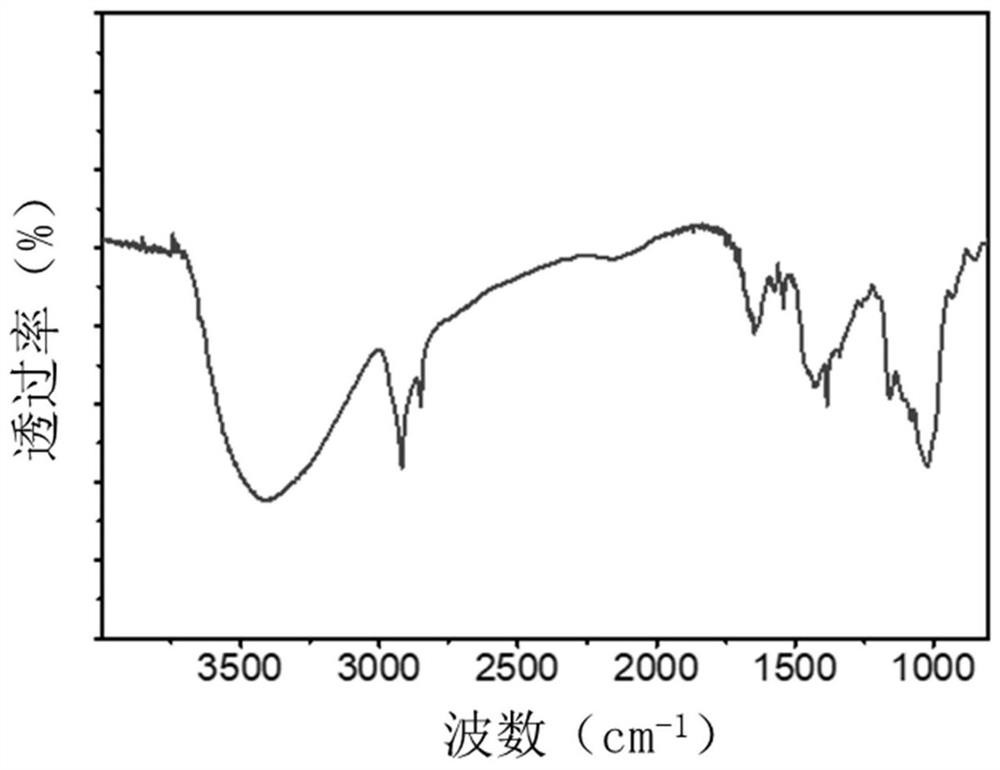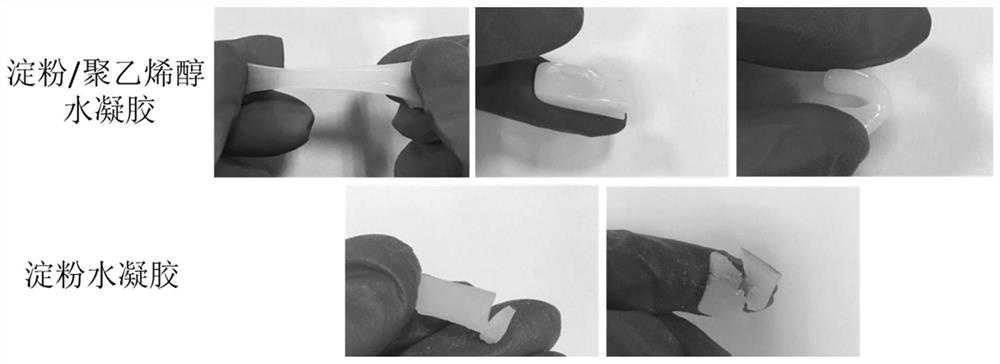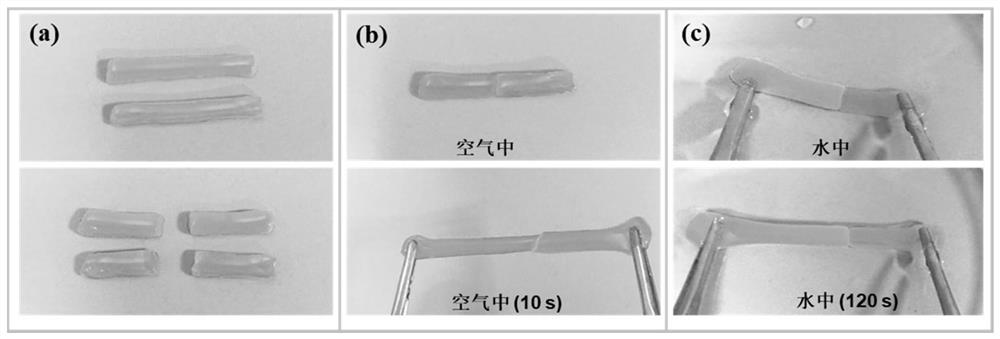Ultrafast self-healing polysaccharide-based hydrogel strain sensor and manufacturing method thereof
A strain sensor, hydrogel technology, applied in the direction of electric/magnetic solid deformation measurement, electromagnetic measurement device, etc., can solve the problems of external stimulation, non-self-healing, poor stretchability, etc., to achieve a wide detection range, widen applications, Inexpensive effect
- Summary
- Abstract
- Description
- Claims
- Application Information
AI Technical Summary
Problems solved by technology
Method used
Image
Examples
Embodiment 1
[0027] Step 1: put 7 g soluble potato starch, 1 g polyvinyl alcohol and 0.7 g borax into a beaker;
[0028] Step 2: Add 45 mL of deionized water into the above beaker, and mechanically stir at the oil bath temperature (98 °C) at a speed of 300 r / min for 4 h, so that the starch and polyvinyl alcohol are fully swollen and dissolved, and the borax is completely dissolved to obtain Starch-polyvinyl alcohol-borax sol;
[0029] Step 3: Stop the mechanical stirring and remove the stirring rod, and continue heating in the oil bath at 98 °C for 2 h until the bubbles in the solution are completely removed;
[0030] Step 4: Pour the above sol into the mold and cool at room temperature to obtain a stretchable and ultrafast self-healing polysaccharide conductive hydrogel;
[0031] Step 5: Encapsulate the hydrogel with a stretchable tape and install conductive electrodes to form a flexible strain sensor.
[0032] figure 1 Infrared spectra measured after freeze-drying for the ultrafast se...
Embodiment 2
[0037] Step 1: Put a mixture of 10 g soluble potato starch and carboxymethyl potato starch (2:1), 0.1 g polyvinyl alcohol, and 1 g borax into a beaker;
[0038] Step 2: Add 60 mL of deionized water into the above beaker, and mechanically stir at an oil bath temperature (110 °C) at a speed of 600 r / min for 2 h to fully swell the soluble potato starch-carboxymethyl starch and polyvinyl alcohol Dissolving, borax dissolves completely, obtains soluble potato starch-carboxymethyl starch-polyvinyl alcohol-borax sol;
[0039] Step 3: Stop the mechanical stirring and remove the stirring rod, and continue heating in the oil bath at 110 °C for 2 h until the air bubbles in the sol are completely removed;
[0040] Step 4: Pour the above sol into the mold and cool at room temperature to obtain a stretchable and ultrafast self-healing polysaccharide conductive hydrogel;
[0041] Step 5: Encapsulate the hydrogel with stretchable tape and install conductive electrodes to form a flexible strai...
Embodiment 3
[0044] Step 1: Put 4 g of agarose, 3 g of polyvinyl alcohol, and 0.6 g of borax into a beaker;
[0045] Step 2: Add 70 mL of deionized water into the above beaker, and mechanically stir at the oil bath temperature (100 °C) at a speed of 400 r / min for 3 h, so that the agarose and polyvinyl alcohol are fully swollen and dissolved, and the borax is completely dissolved. Obtain agarose-polyvinyl alcohol-borax sol;
[0046] Step 3: Stop the mechanical stirring and remove the stirring rod, and continue heating in the oil bath at 100 °C for 2 h until the air bubbles in the sol are completely removed;
[0047] Step 4: Pour the above sol into the mold and cool at room temperature to obtain a stretchable and ultrafast self-healing polysaccharide conductive hydrogel;
[0048] Step 5: Encapsulate the hydrogel with stretchable tape and install conductive electrodes to form a flexible strain sensor;
[0049] Referring to Example 1 to investigate the hydrogel-based flexible strain sensor pre...
PUM
| Property | Measurement | Unit |
|---|---|---|
| viscosity | aaaaa | aaaaa |
| alcoholysis degree | aaaaa | aaaaa |
Abstract
Description
Claims
Application Information
 Login to View More
Login to View More - R&D
- Intellectual Property
- Life Sciences
- Materials
- Tech Scout
- Unparalleled Data Quality
- Higher Quality Content
- 60% Fewer Hallucinations
Browse by: Latest US Patents, China's latest patents, Technical Efficacy Thesaurus, Application Domain, Technology Topic, Popular Technical Reports.
© 2025 PatSnap. All rights reserved.Legal|Privacy policy|Modern Slavery Act Transparency Statement|Sitemap|About US| Contact US: help@patsnap.com



